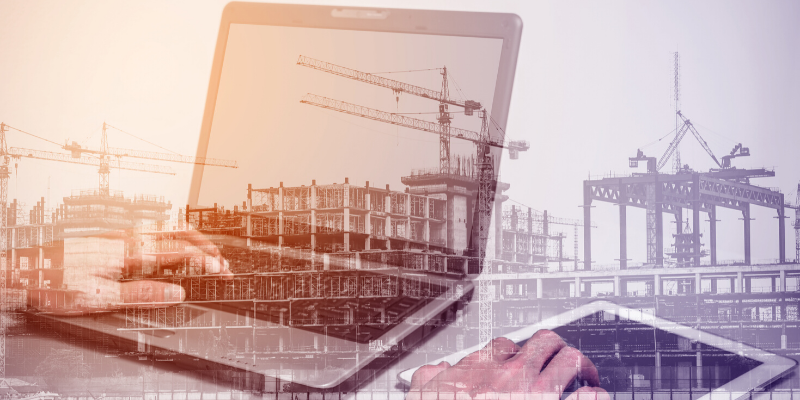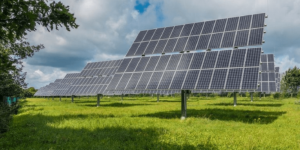The construction industry is shifting towards sustainability, with green buildings becoming key to eco-friendly development.
These buildings aim to reduce the impact on health and the environment by using resources efficiently, abating waste, and creating healthier spaces. They significantly reduce greenhouse gas emissions and conserve natural resources. As awareness of climate change grows, technology drives the evolution of green building practices, making them vital in combating climate change and promoting sustainable development.
The roots of green building practices can be traced back to the 1960s with the introduction of ecological architecture. The energy crisis of the 1970s accelerated the push towards renewable energy sources and more energy-efficient buildings. The 1980s saw the rise of the “sustainable development” paradigm, leading to widespread implementation of energy-saving building systems.
In 1990, the UK introduced the world’s first green building standard, followed by the formation of the U.S. Green Building Council (USGBC) in 1993. Notably, the CII-Sohrabji Godrej Green Business Center in Hyderabad was the first building outside the US to receive a LEED Platinum rating at its inauguration, marking a momentous achievement in the global green building movement.
Technological advancements in green building
Enhanced energy efficiency is a cornerstone of green buildings. Technological advancements have significantly improved this aspect, with high-performance insulation, energy-efficient windows, and advanced HVAC systems becoming essential components.
Integrating renewable energy sources like solar and wind power empowers buildings to generate their own clean energy. Smart building technologies, such as sensors and automation, optimise energy usage by learning occupancy patterns and adjusting heating, cooling, and lighting accordingly.
India’s Energy Conservation Building Code (ECBC) mandates energy efficiency standards for new commercial buildings, contributing to significant energy savings. The government’s ambitious renewable energy targets, along with the development of smart grids, further support the integration of clean energy sources into green buildings. These efforts are crucial for achieving India’s goal of net-zero emissions by 2070 and reducing CO2 emissions from the power sector.
Green buildings prioritise water conservation through efficient plumbing fixtures, rainwater harvesting, and greywater recycling. Smart irrigation systems optimise water usage by adjusting schedules based on weather and soil conditions. Water-efficient appliances and drought-resistant landscaping further reduce water consumption.
These measures not only benefit the environment but also lower operational costs for building owners. India, facing declining per capita water availability due to population growth and climate change, has implemented various water conservation initiatives. The National Water Policy emphasises efficient water use, rainwater harvesting, and groundwater management.
Government initiatives like the Jal Shakti Abhiyan and specific programs like Har Ghar Jal Yojana and Jal Jeevan Mission aim to provide safe drinking water to all rural households and improve water quality. Additionally, the government is working on a National Water Grid to address regional water imbalances.

The building industry is actively promoting sustainability by investing in sustainable materials that reduce resource consumption and waste. Innovative materials, such as cardboard or chipboard panels, repurpose existing resources to minimise the carbon footprint. Aerocon panels, for example, offer rapid on-site assembly and enhance efficiency. These advancements not only improve sustainability but also enhance project efficiency and cost-effectiveness.
India has its own green building materials certification system to encourage the use of sustainable materials. Government incentives, including tax benefits and subsidies, further promote their adoption. Additionally, research institutions and universities in India are actively engaged in developing new sustainable materials.
Building Information Modeling (BIM) is a digital representation of a building that significantly enhances the sustainability of green construction. As a collaborative platform for architects, engineers, and construction professionals, BIM optimises planning, design, and management processes. This leads to better resource management, reduced waste, and increased efficiency throughout the building’s lifecycle.
BIM enables precise simulations and analyses, supporting improved energy use, material selection, and overall sustainability. All Government projects in India, such as infrastructure development and smart cities, have been mandated to use BIM. The National Highways Authority of India (NHAI) has developed a BIM Toolkit, which provides guidance on BIM implementation for highway projects.
The Bureau of Indian Standards (BIS) has published several BIM standards, including IS/ISO 19650, which provides a framework for BIM implementation. As of now, there isn’t a strict, nationwide BIM mandate in India. However, there are strong government initiatives and recommendations promoting its adoption.
While there isn’t a universal mandate, the trend is clearly towards BIM adoption in India, driven by its potential benefits in improving efficiency, reducing costs, and enhancing sustainability in construction projects.
Market growth, regulatory support, and certification
India’s smart homes market is set to expand by 9.14% from 2024 to 2028, reaching a valuation of $9.2 billion. This growth is driven by the increasing integration of Internet of things (IoT) devices, which improve home security, energy efficiency, and overall convenience. Concurrently, the green buildings market in India is projected to grow significantly, contributing $39 billion by 2025.

This trend reflects a rising emphasis on sustainable construction, with green buildings making up a growing share of new developments. Within this market, the commercial segment is expected to generate $11 billion, while the residential segment is projected to reach $28 billion.
The proliferation of green building practices has been bolstered by certification systems and standards. The Leadership in Energy and Environmental Design (LEED) certification, established by the U.S. Green Building Council (USGBC), is widely recognized. Green Business Certification Inc. (GBCI) is the sole body providing LEED certification in India, ensuring adherence to global standards.
Indian regulatory frameworks, such as the Energy Conservation Building Code (ECBC) and Green Rating for Integrated Habitat Assessment (GRIHA), promote sustainability. Government initiatives offer incentives like tax benefits, low-interest loans, and fast-track approvals for green projects, which seek to make green building financially viable and encourage private sector investment in sustainable practices.
Global commitments and future directions
At COP28, global leaders committed to tripling renewable energy capacity and doubling energy efficiency improvements by 2030, highlighting the critical need for sustainable initiatives. India’s goal of achieving net zero emissions by 2070 further stresses the importance of green buildings.
The future of green buildings looks promising, driven by increasing awareness and regulatory support. Enhanced building codes and sustainability standards are set to play a crucial role, encouraging developers to adopt more environmentally friendly practices. These efforts will help reduce carbon footprints, conserve resources, and promote healthier living environments.
(Marc Nezet is the Chief Strategy Officer (CSO) and Chief Division Officer (CDO), Operate & Manage Division at Nemetschek Group,)










